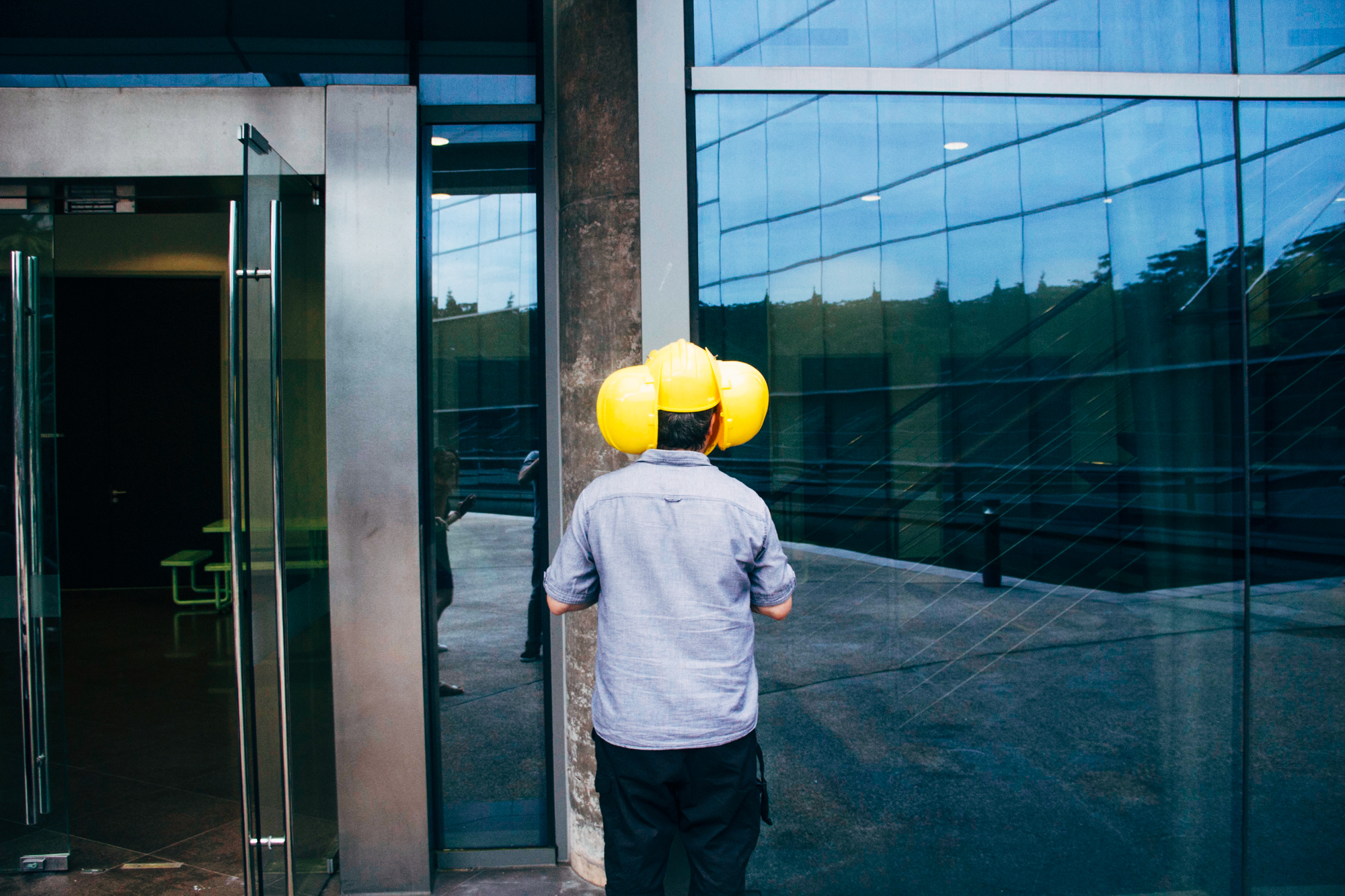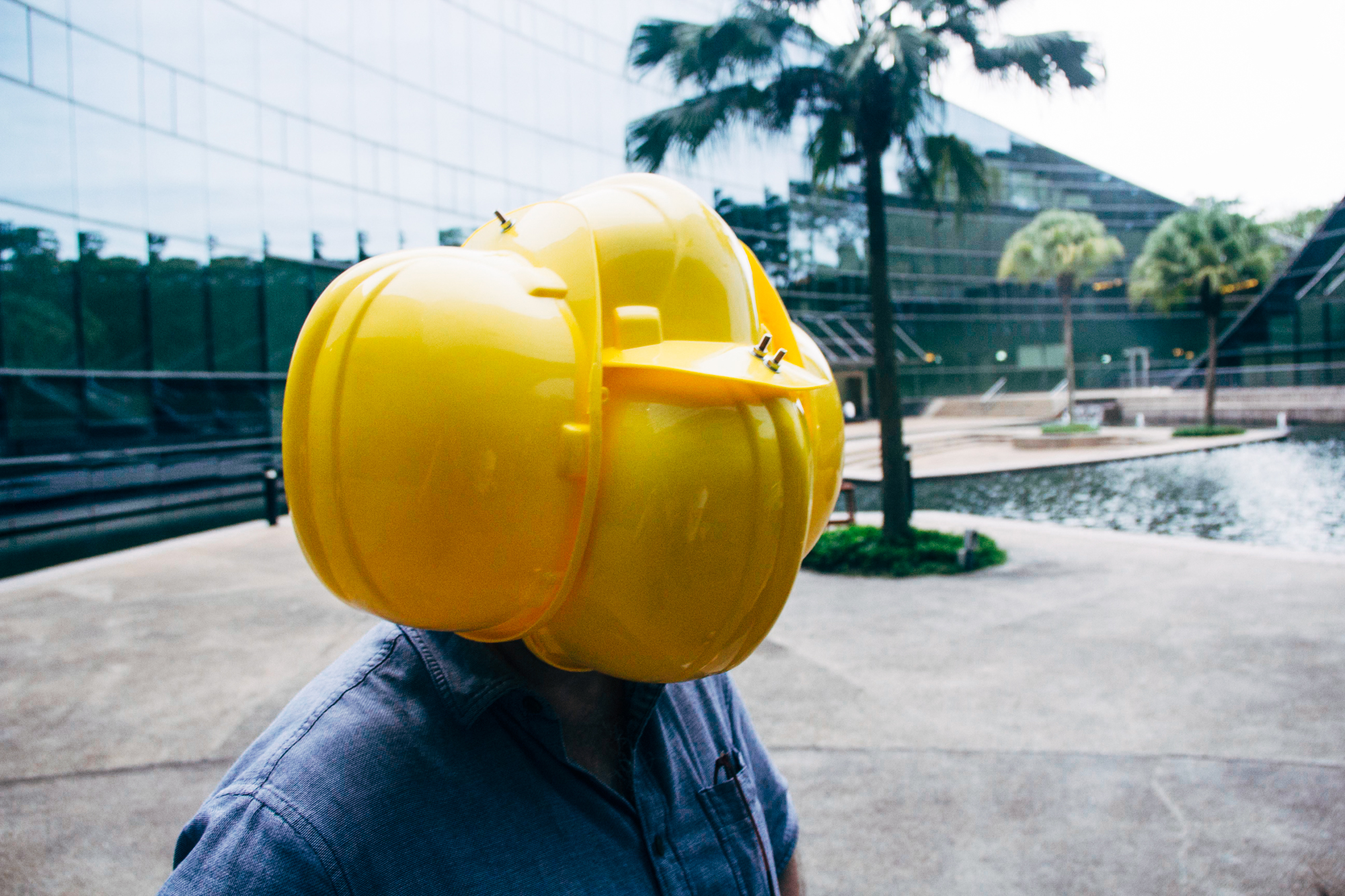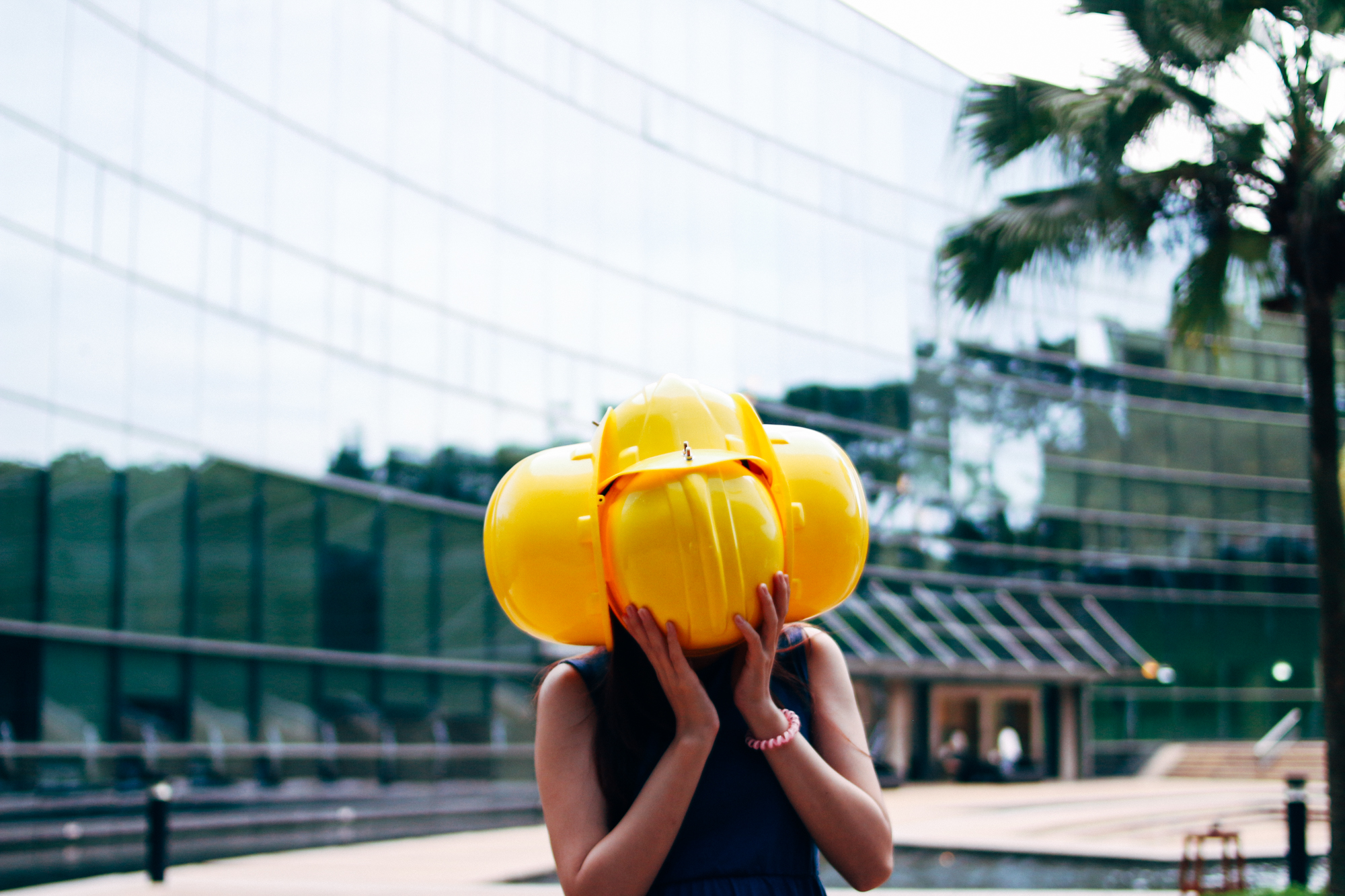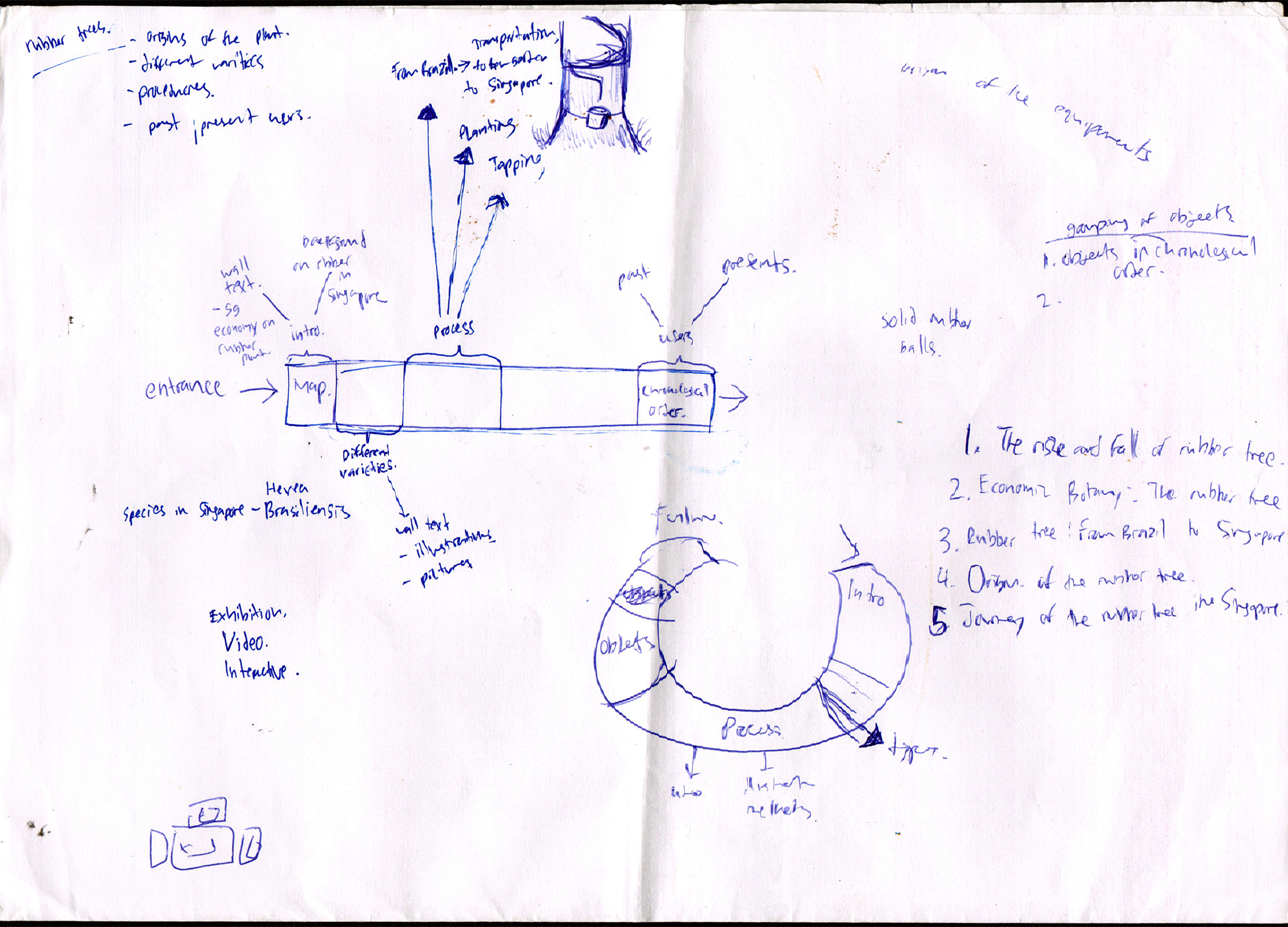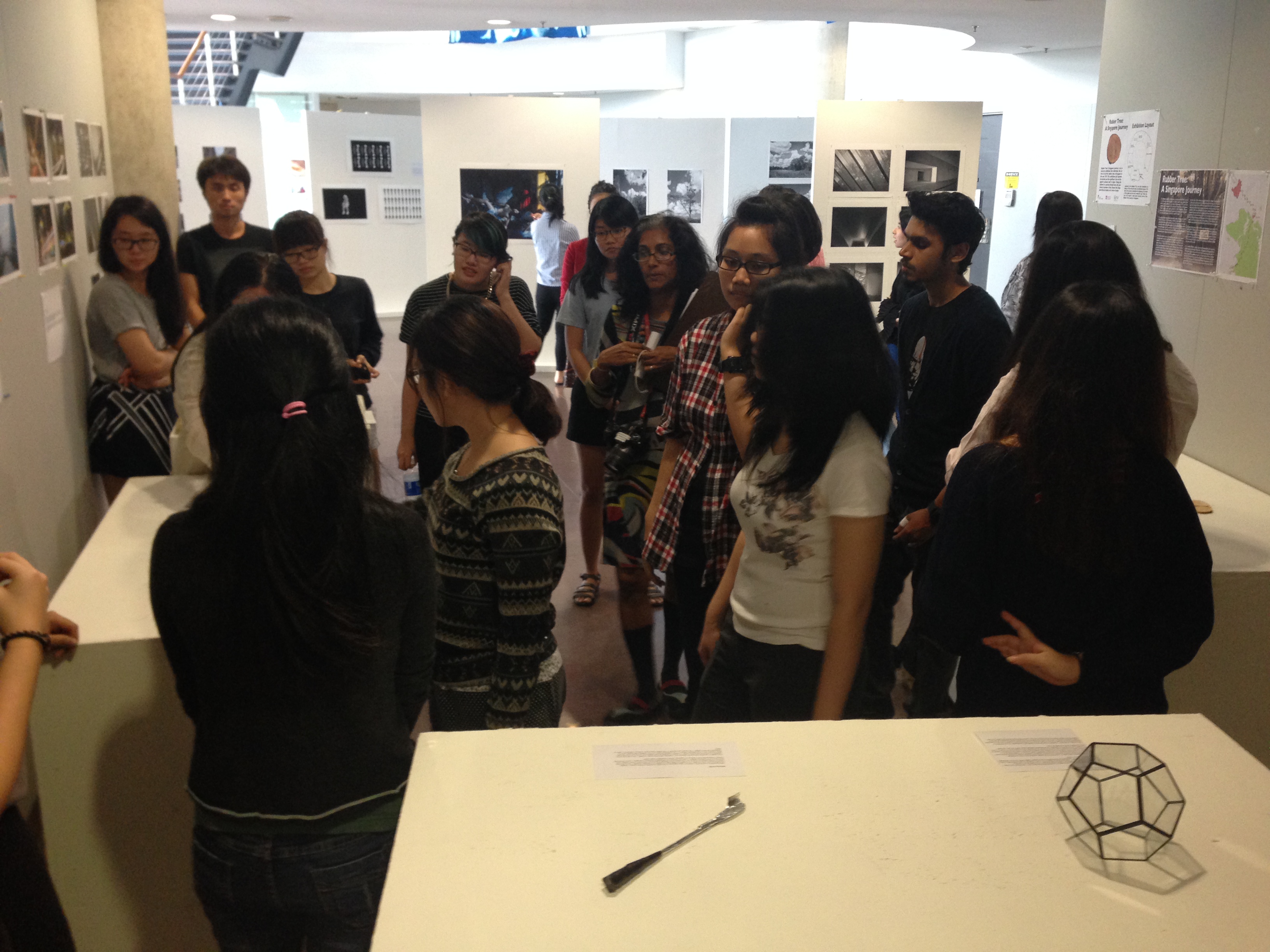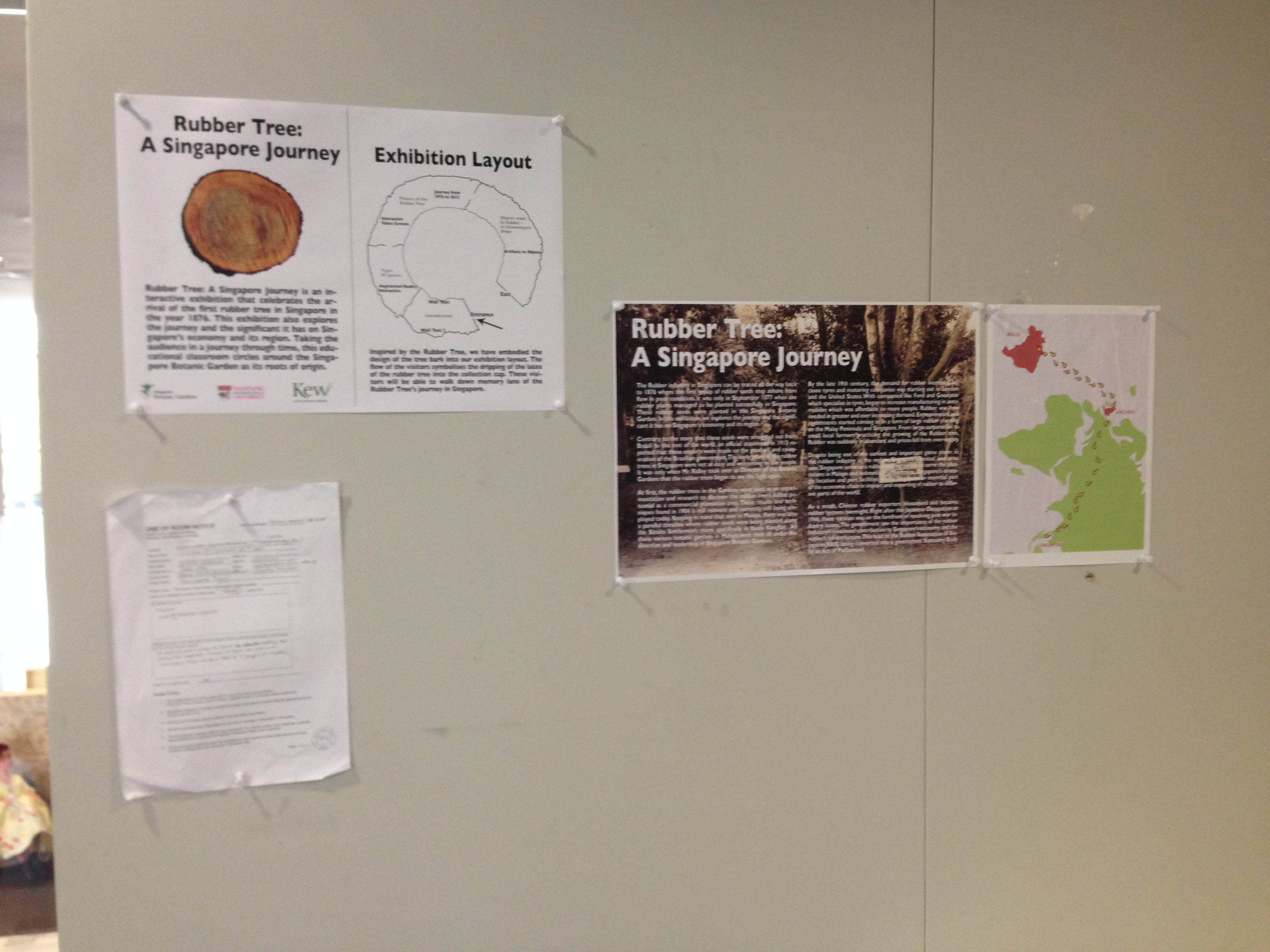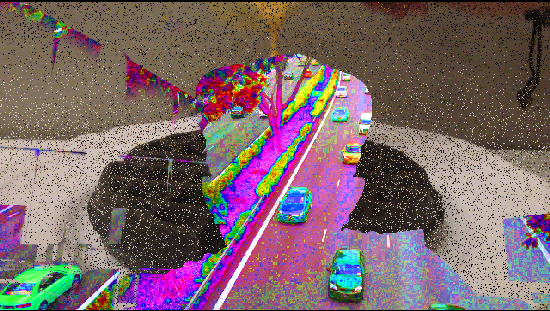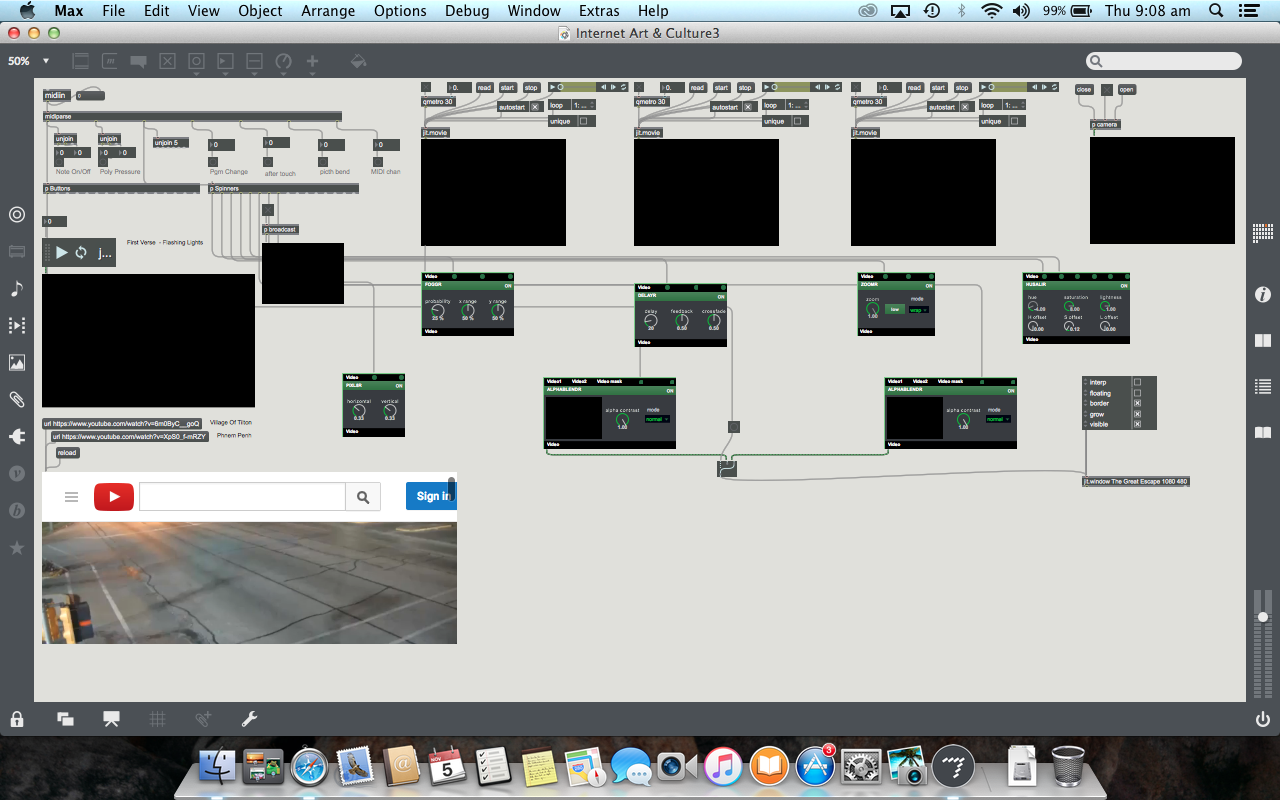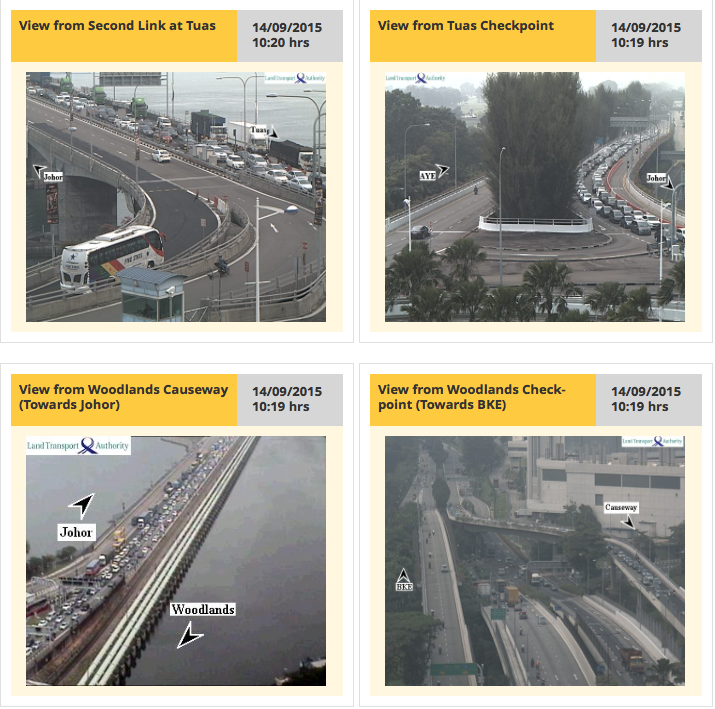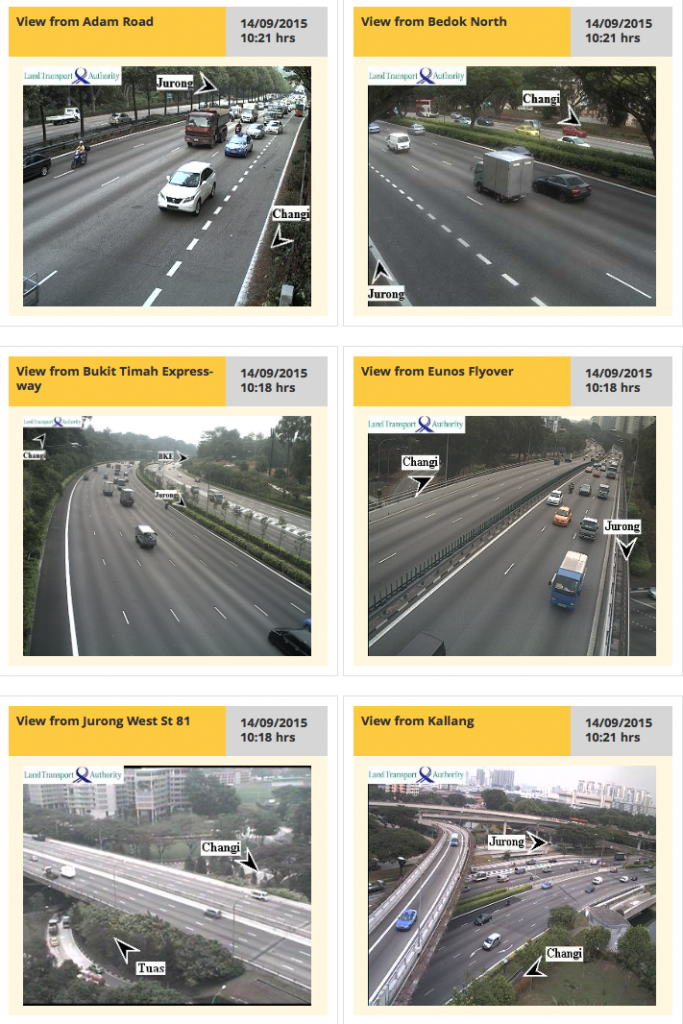Being the only tropical garden, to be honored as a UNESCO World Heritage Site, the Singapore Botanical Garden is Singapore’s equivalent to the Central Park in New York City. It evolved from an experimental economic garden to a botanical institution with roles in research, education, conservation and also recreation. We can use the garden as a subject of our research to answer questions on why such garden is very important to a country.
Exploring the Singapore Botanical Garden online and onsite, we have come up with different theme and objects that can be used in the exhibition proposed. As the botanical garden not only houses plants and flowers, they also house sculptures as well. Going through the whole park, many sculptures in style and medium can be seen. They are made from different artists and this is one of our possible topic; choosing sculptures in the Garden. Below are the sculptures.
- Sculptures.

Bull Frog

Chopin

Fifty Wings

Gaboon Viper


Passing Of Knowledge
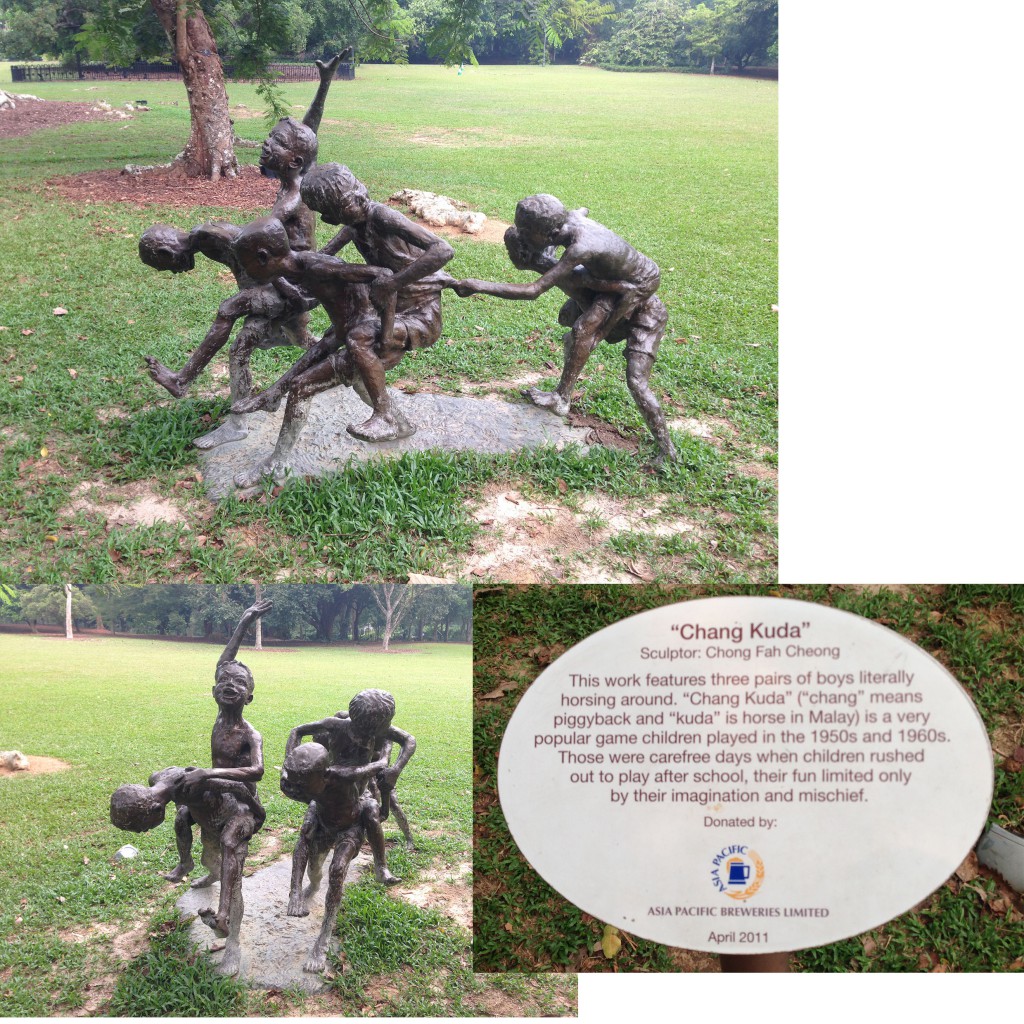
Chang Kuda

Joy


Swing Me Mama

Bookreader
As you can see at the photographs below, each sculpture is very unique and they all have different style. The sculpture is placed in very strategic place to compliment the area and garden. These sculptures not only serve as a decorative purposes but also a symbolic and tells the history of the Singapore Botanical Garden. It will be an interesting way to see how we can make a proposal exhibition out of these sculpture.
The next possible format and proposal is to look at the plants, trees and or the hybrid Orchids at the National Orchid Garden. Below are some important trees that the Singapore Botanical Garden have recognise due to its long history and memories they have. While there are more heritage trees to be discovered at the park, these are a few stands out one that is worth a mention.
2. Heritage Trees

Tembusu

Mandela Giant Cola
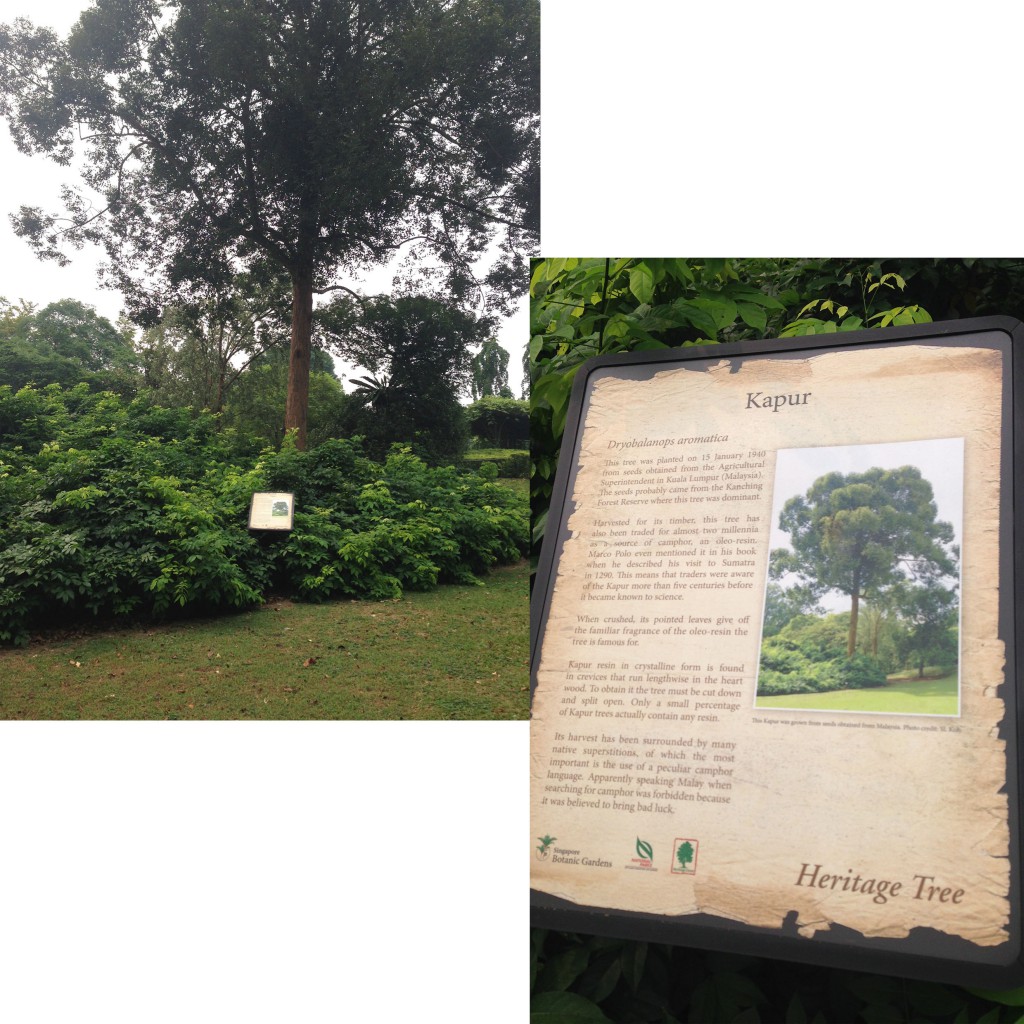
Kapur

Tembusu
Our group think that these trees plays an even more important roles to make the people in UNESCO to consider making the Botanical Garden a Heritage site. Upon more research, we might even track down to where these trees come from. There might be a chance that some trees were brought in from other parts of the planet to be grown here in Singapore.
One such species that stands out is the Tembusu Tree. The tree was chosen to exemplify Singapore’s aspiration of becoming a “garden city”. Moreover, its sturdiness and spreading canopy were thought to embody strength, resilience and a continuous drive for progress. The species has also been used as a metaphor for relations between the state and civil society in the 1990s. In a 1998 speech, ambassador-at-large Tommy Koh likened the government under the premiership of Goh Chok Tong to the tembusu for its tall and strong qualities but with a canopy smaller than the banyan tree, which was used to describe the preceding Lee Kuan Yew era. The smaller canopy of the tembusu allows other plants – a reference to civil society – to grow around it.
While we are exploring other options on our exhibition proposal. We thought we could feature artists who works with nature like plants or spices. By looking at these contemporary artists, we can trace back the material back to a garden which is related in this topic.
3. Contemporary Artist
- Laurent Mareschal. Laurent is concerned with the impermanence of life and often uses Palestinian sources for his work, acknowledging the particular impermanence of Palestinian lives. He creates large, site-specific works, using everyday materials such as spices, soap and food. With these he creates ephemeral patterns arranged to evoke such things as decorative floor titles or traditional embroidery.
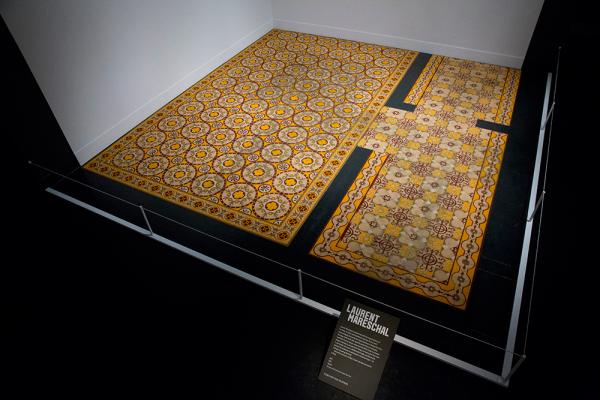
Laurent Mareschal, ‘Beiti’, Spices on gallery floor. Courtesy of the artist and Galerie Marie Cini. © Victoria and Albert Museum, London
2. Haegue Yang. Haegue Yang, a leading artist of her generation kicks off the first series of PlatformSTPI Projects (PSP) with Honesty Printed on Modesty, close to 100 new breakthrough works drawing attention to the power of spices and everyday food items – from its domestic function to its impact on civilizations and evolving human history.
Yang’s surprise discovery and usage of spices and vegetables found in markets of Singapore from around the world, charts the earliest drivers of globalization where the quest for spices established a vast economic network throughout the middle ages and colonialism. Followed by modernization and its scientific advancements, which revolutionized and continue to impact how food is harvested, processed and distributed to meet today’s consumption demands.

“Spice Sheets,” photo courtesy Haegue Yang, Singapore Tyler Print Institute.
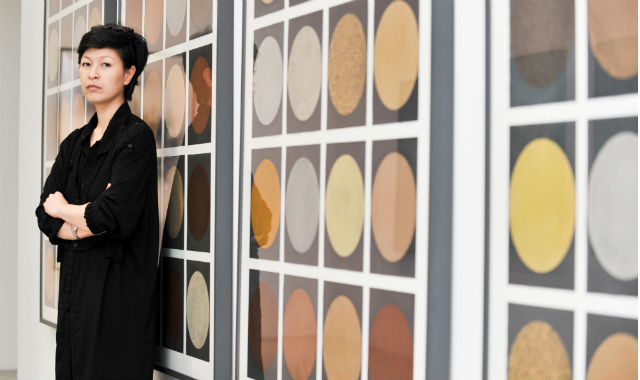
Haegue Yang at the Singapore Tyler Print Institute, in front of her “Spice Moon” series.
3. Maya Attoun. Maya Attoun was born in Jerusalem in 1974. She graduated from the Bezalel Academy of Art and Design, where she received her BFA in 1997 and an MFA in 2006.
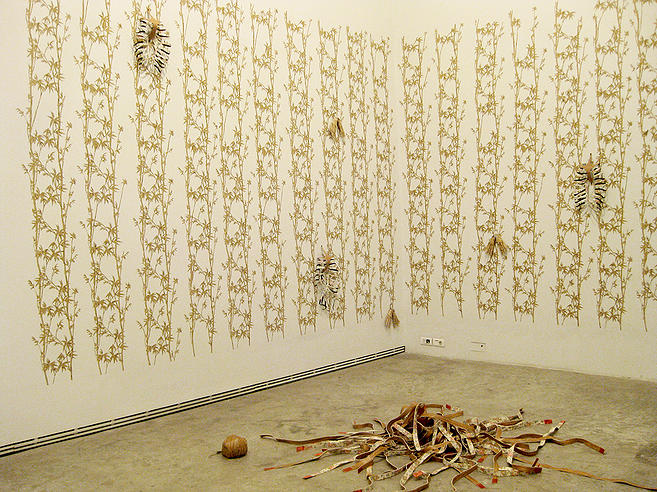
House Plants Wallpaper and linoleum Ileana Tounta Contemporary Art Center, Athens 2009
While walking through the Singapore Botanical Garden, we came across an artist putting the finishing touches to her drawing of a specific frame of the garden.
4. Paintings of Singapore Botanical Garden

It’s no surprise that the Singapore Botanical Garden is a spot for illustrator and painter given the beautiful scenery the landscape offers. It would also be possible to use paintings of the botanical garden for our exhibition proposal as well!
Another possible items is to use archival photograph of the Singapore Botanical Garden as highlight of our exhibition proposal. We could arrange photograph through out the years to see the growth and progress of the botanical garden to it is today.
5. Old Photographs

A big crowd at the Botanic Gardens on Aug 2, 1959, for the first performance of Aneka Ragam Rakyat or People’s Variety Show, featuring songs and dances by different racial groups. PHOTO: ST FILE
One interesting fact about the SBG is that, during the Japanese Occupation in Singapore, the Japanese actually took care of the Botanical Garden and continue with their research. This could be an interesting topic to look at as well.
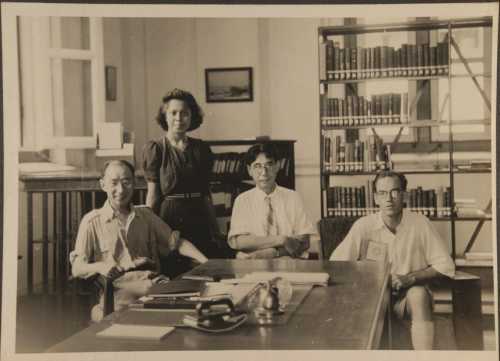
Corner seated next to two of the Japanese scientists who held control over the Gardens during the Japanese invasion. The Marquis Yoshuchika Tokugawa is seated at the far left and Professor Hidezo Tanakadate is in the centre (the woman in the image is not identified).
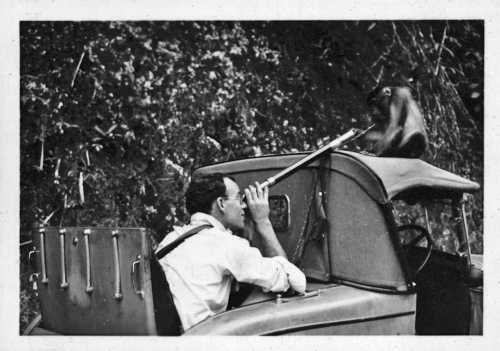
E.J.H. Corner with one of the “botanical monkeys” that he famously used to help collect field specimens.
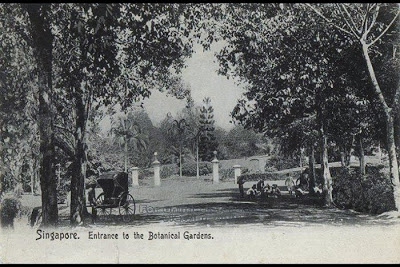
Entrance to Botanic Gardens c 1900. Photo Credit: National Archives of Singapore.
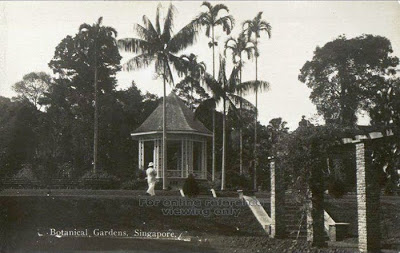
Bandstand
We also search on exhibitions that was held onsite at the SBG or any other location which is related to the art of Botanical.
- The Fox Got You at the University of Oxford Botanic Garden. The Fox Got You is a photographic installation celebrating six common plants which are at the origin of five major medicinal drugs. The exhibition brings togehter the plants, the drugs, the clinicians, the patients, the people making the drugs and the scientists researching how these diseases affect our body. By revealing the powers behind some of the plants growing in the Botanic Garden, this exhibition offers a unique insight into the way we are made and changed by the natural world.

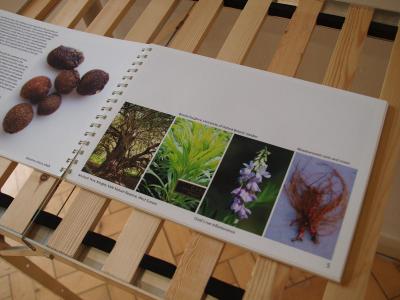
2. The “Singapore Garden Photographer of the Year” photo competition aims to showcase the rich biodiversity and greenery that make Singapore an endearing and exceptional City in a Garden. Rediscover the heritage and value of our parks, gardens and nature reserves and capture your interpretation through photographic lens of this living space and greenery that Singapore is famous for.
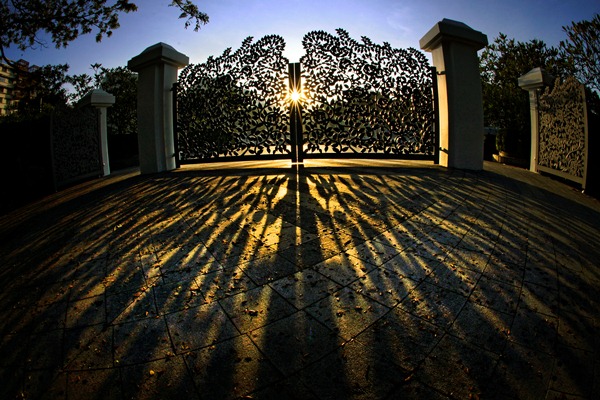
First Prize Winner. Mr Kwan Sai Hoe – ‘Tanglin Gate at Singapore Botanic Gardens’
3. Botanical Inspirations: Topical Splendour – Plant portraits from Shirley Sherwood Contemporary Collection. The artistic yet relatively scientifically identifiable depiction of plants has a long heritage. Tracing its history back into one of the most well documented period of human history – the Greek era. With the introduction of photography, botanical painting has since developed more into an art form for the appreciation of people from all walks of life. Botanical artists marry scientific accuracy and artistic sensibility. Today, it puts across the message of conservation by highlighting the beauty and diversity of the plant world through the images of rare and endangered plants.
This exhibition is Singapore Botanic Gardens’ first showcase of botanical paintings from various renowned international artists, curated by Dr Shirley Sherwood, whose family sponsored the Shirley Sherwood Gallery of Botanical Art in Kew Gardens, UK.
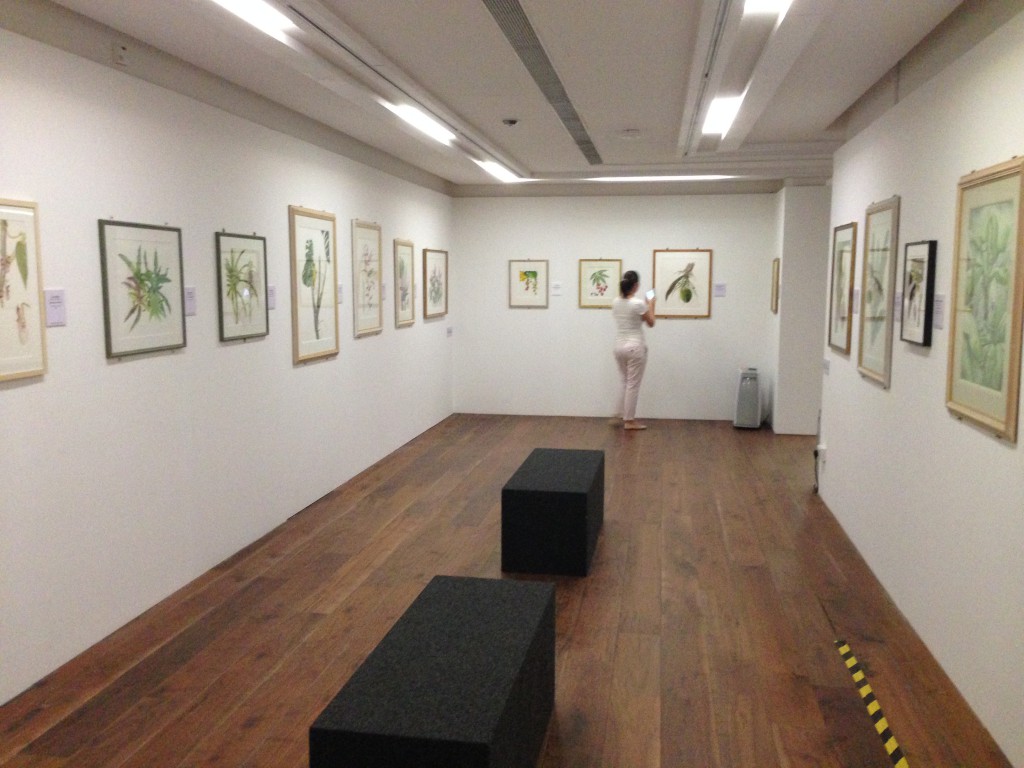
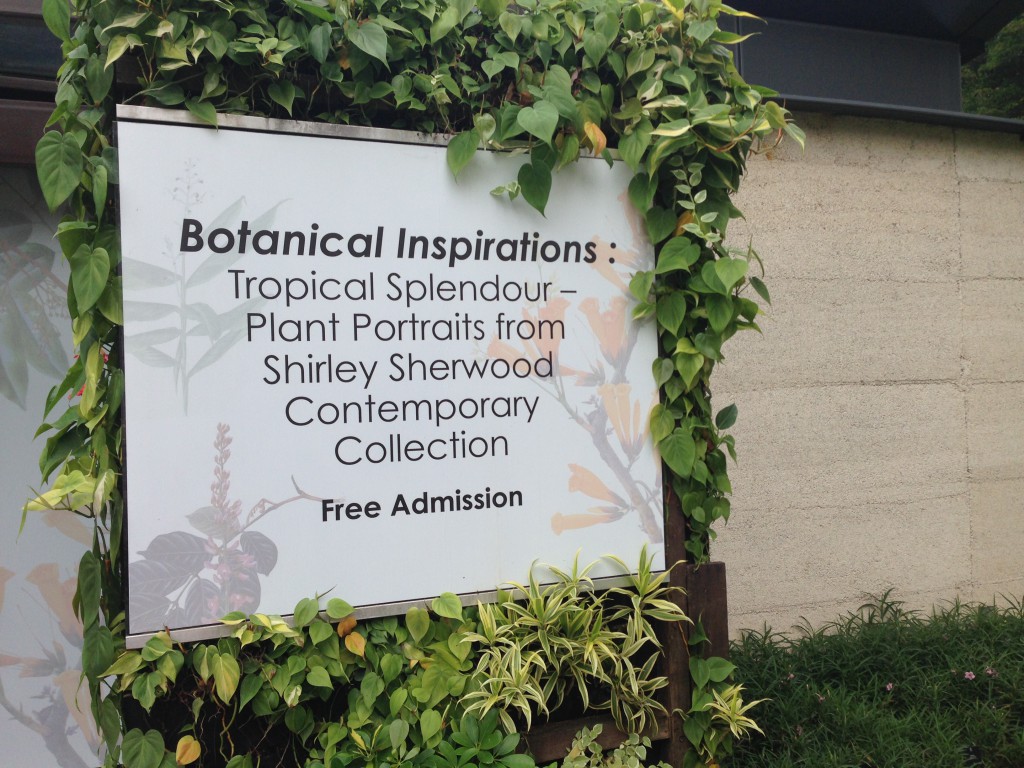
Short Term Goals
1. Kamarul: Photograph on site in order to find any interesting subject to be use as research material. Find relationship between the SBG and how people interact with the park. Keeping the proposal open until a good statement could be made or research upon.
2. Nina: Research on past exhibition that is held in the SBG or outside which could be related to the topic. Overseas exhibition that is relevant can also be a source for inspiration and research material. Finding scholarly sources pertaining to how landscape/garden could affect people’s visualisation.
3. Basirah: Research on contemporary artist who uses the ‘garden’ and botany as their main source of inspiration and metaphor for their art making. Search on local artist as well who paints the botanical garden or the idea of a garden.
4. Wei Lin: Finding scholarly articles on any relevant information that could be link to our topic on SBG. Search on how the landscape of the SBG on the Singapore 5 Dollar note could be relevant to the topic as well. Finding a proposal statement which could tell a story as well as educational.
Long Term Goals:
Kamarul: To read as much article which is relevant to the topic of sculpture, plantation or even hybridisation. To know SBG physically in the back of my hand.
Nina: Find a common thread on exhibitions on Botanical Art which could be use to tie everything in for our proposal.
Basirah: To find a local artist who paint scenes from the Singapore Botanical Garden. Visual analysis on paintings or photographs of SBG.
Wei Lin: Research on how exhibition is being organised from printing of description to the placing of the artwork.
As a group, within this coming 2 months, we aim to keep in contact through a shared folder in the Google Drive where anyone is able to share information which could be relevant to our project. We also plan to meet once every 2 weeks in order to update each other on their tasks.
 This is me showing a demo on how my device work.
This is me showing a demo on how my device work. You put it over your head and you’re done. It was quite special to me because it was my first work that i did some hands on work with the drill.
You put it over your head and you’re done. It was quite special to me because it was my first work that i did some hands on work with the drill.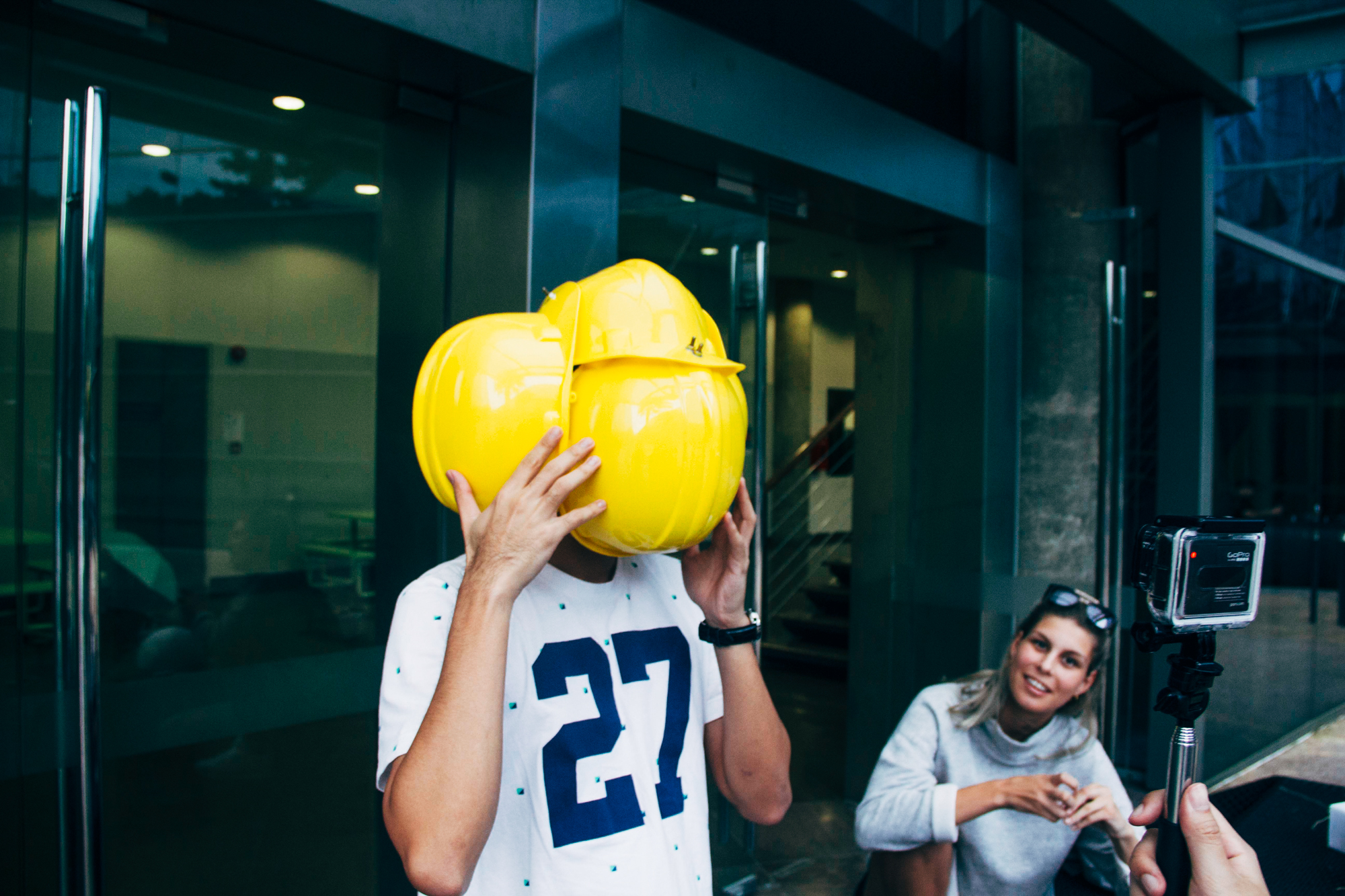 Even though you can’t see the face of the user, somehow it has a face, due to the texture of the helmet.
Even though you can’t see the face of the user, somehow it has a face, due to the texture of the helmet.